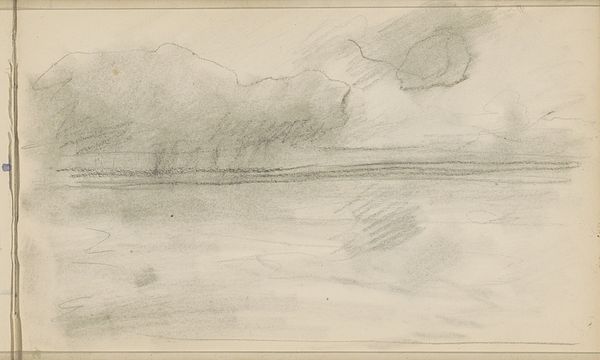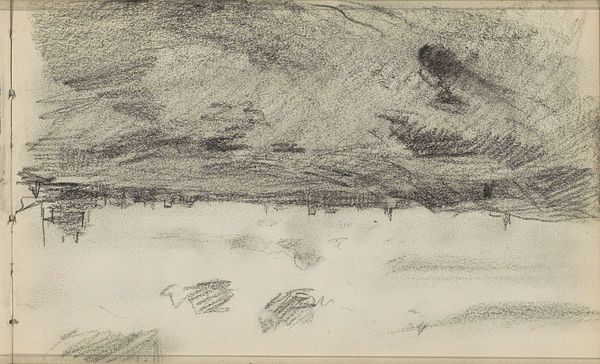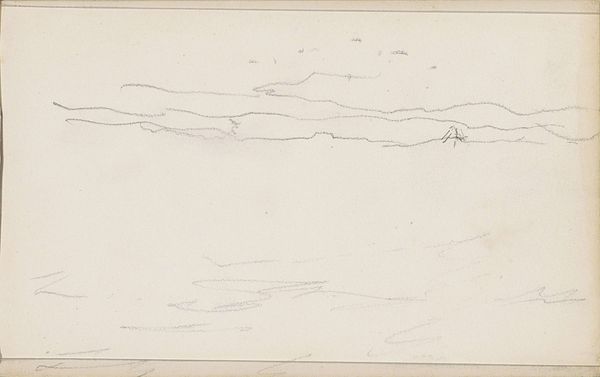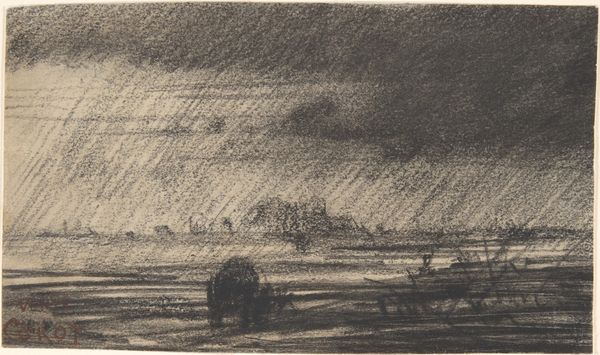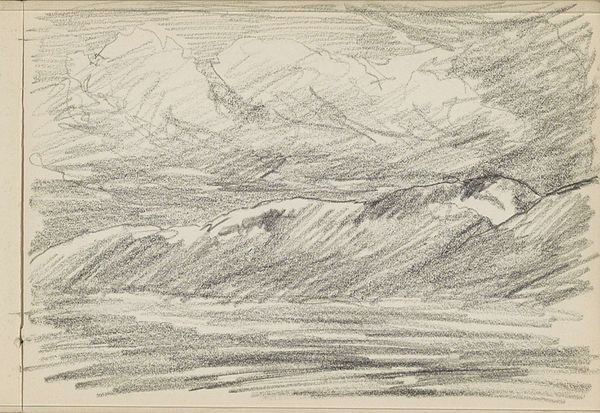
drawing, pencil
#
drawing
#
pencil sketch
#
landscape
#
pencil
#
realism
Copyright: Rijks Museum: Open Domain
Editor: This pencil drawing, titled "Strandgezicht," by Johan Antonie de Jonge, probably made sometime between 1901 and 1927, feels so stark. The heavy lines sketching out the waves give it a brooding quality. What do you see in this piece, especially in terms of what it might represent beyond just a scene? Curator: I see a landscape imbued with a powerful sense of memory. Notice how the lines in the sky almost seem to radiate downward, a common visual motif in art representing divine presence or overwhelming emotional states. Given the time period, do you think it might reflect the anxieties of a rapidly changing world? Editor: That's an interesting point. The circle in the sky…is that the sun? Or something else? It doesn't give off a feeling of warmth. Curator: Exactly! The circle, rendered so plainly, departs from a conventional sun symbol. It's isolated and unsettling. This distancing from familiar iconography, coupled with the almost oppressive weight of the sky, conveys an underlying psychological tension. This wasn't simply an artist capturing a seaside moment. He was conveying feeling and inviting us to look more closely at ourselves and our own anxieties in this rapidly changing world. Does that resonance change how you see the figures in the scene? Editor: It does. They seem small and insignificant under this looming sky, almost lost. I originally saw them as just part of the landscape, but now they represent a human struggle. Curator: Precisely. De Jonge, consciously or not, taps into archetypal imagery - the human figure against an overwhelming nature—a timeless visual language. The scene prompts self reflection on the enduring challenges facing individuals when confronted with greater, incomprehensible forces. Editor: I hadn’t considered the cultural memory embedded in such a seemingly simple sketch. Thanks! I’ll certainly think of landscape art differently from now on.
Comments
No comments
Be the first to comment and join the conversation on the ultimate creative platform.

